The temperatures were below zero in the last two months, so my trips to the water always took maximum of a few hours. In the winter I am practising on the Little Danube. I am making a round-trip between Zálesie and Nová Dedinka. It is my favorite section of the Little Danube. It is very lively here even during the heaviest freezes. The wildlife is not sleeping even in the winter. Wild animals are fighting for their lives.
When the temperature increased above zero, I decided to explore the river below. We agreed that we would go down the river Little Danube from Jelka to the confluence of the river Váh in Kolárovo. We split an 80 kilometer long journey into two days.
We started off the first day near the watermill in Jelka at about 8.30 am.
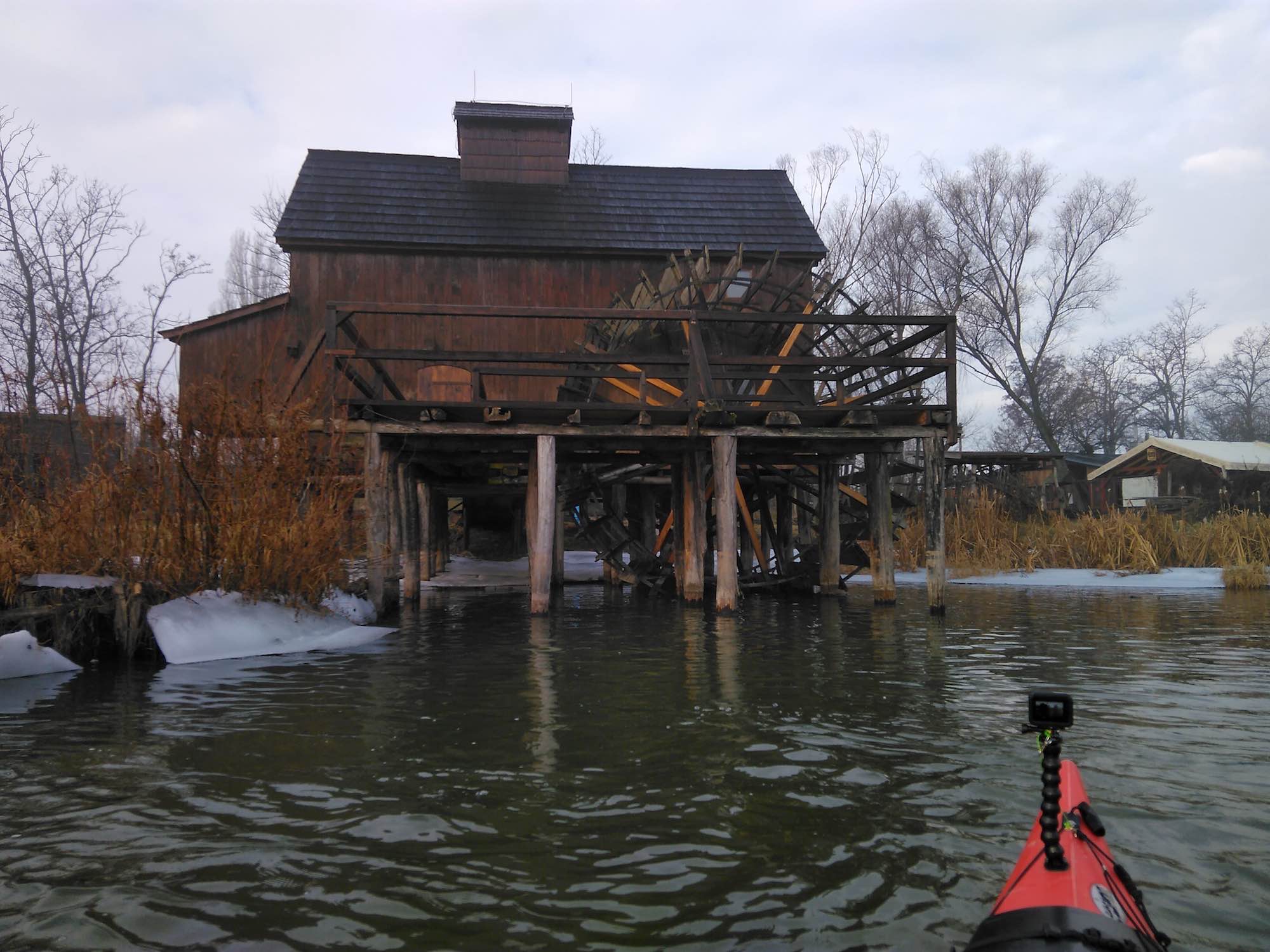 Watermill in Jelka
Watermill in Jelka
The epidemic of bird flu H5N8 reached its peak on the Danube and nearby confluences. It is one of the deadliest strains. Unlike H5N1 mutation, this strain has not moved to human yet. Mortality of birds is almost 100%. They die of organ failures within 48 hours. The shores were lined with dead birds. We counted more than 20 swans. Dead cormorants were caught between fallen trees. Sometimes in groups. The rough winter and lack of food are decreasing the birds’ immune system. Some of them die.
 Swan
Swan
The whole day was very cloudy. From time to time the sun came out and we could enjoy the fairytale scenery.
 Sun between clouds
Sun between clouds
You can meet nutrias on the whole stream of the Little Danube. I followed this one all the way to the shore. She was sitting next to me, cleaning her fur.
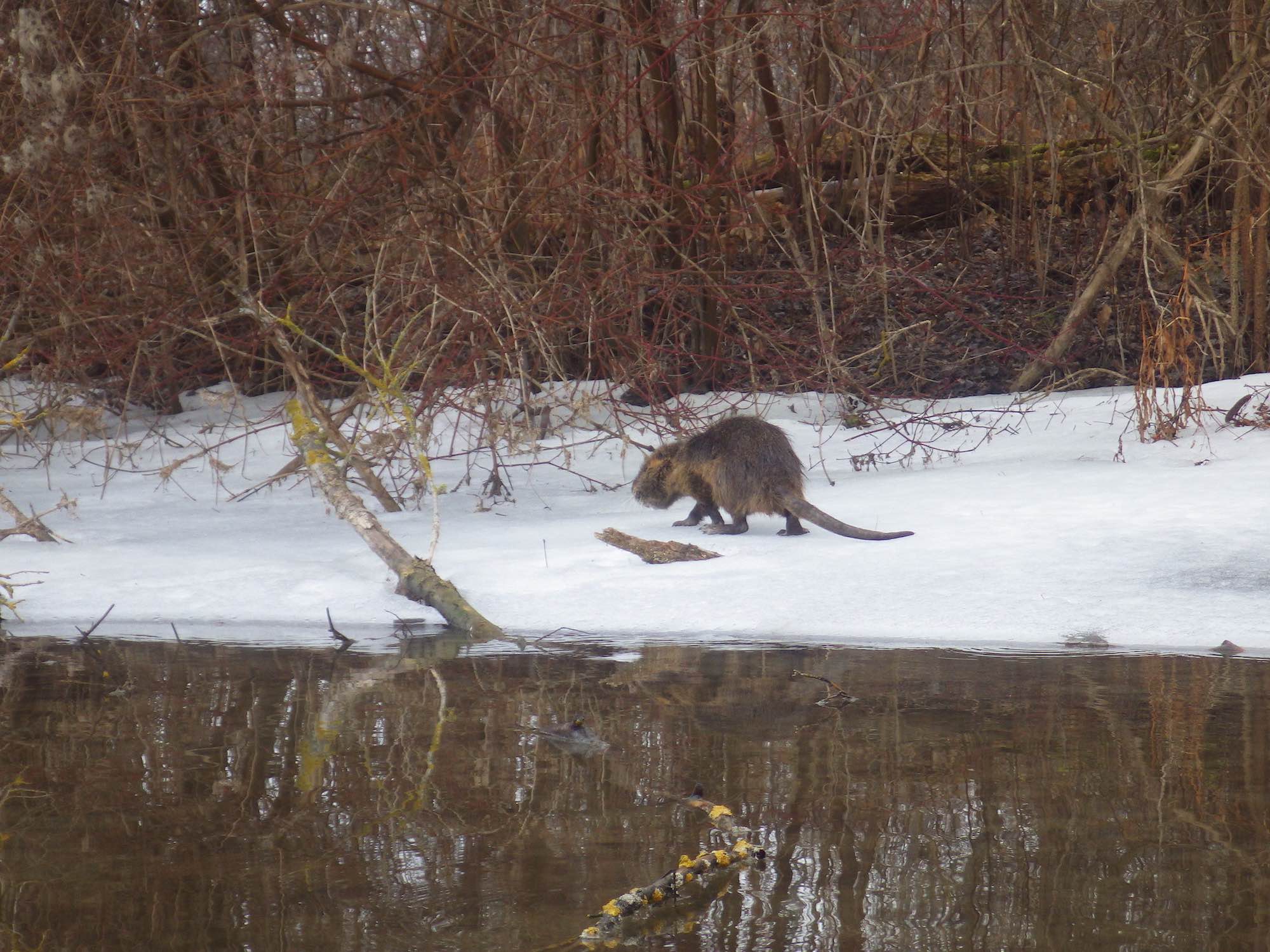 Nutria
Nutria
The shores of the Little Danube are lined with luxury houses and villas. Each has its own pier. They do not like watermen. The owner of the house asked us to release a dead swan. She told us the steel spikes were there to prick the boats. She invited us for coffee. No time. Maybe one day.
 Steel spikes
Steel spikes
Some of the houses were really nice. With pools, of course.
 House
House
The sun was appearing at times. The temperature was not higher than 5°C. It was pretty warm, though. We were just enjoying a good look at black woodpeckers while having a break. It is our biggest woodpecker. He is a very good singer, too.
 Sunny weather
Sunny weather
We are approaching the watermill in Tomášikovo. It is in its original state. It has been working since 1895. It works only as an operable sample of milling trade. Unfortunately, the restaurant next to the watermill is closed during the winter time.
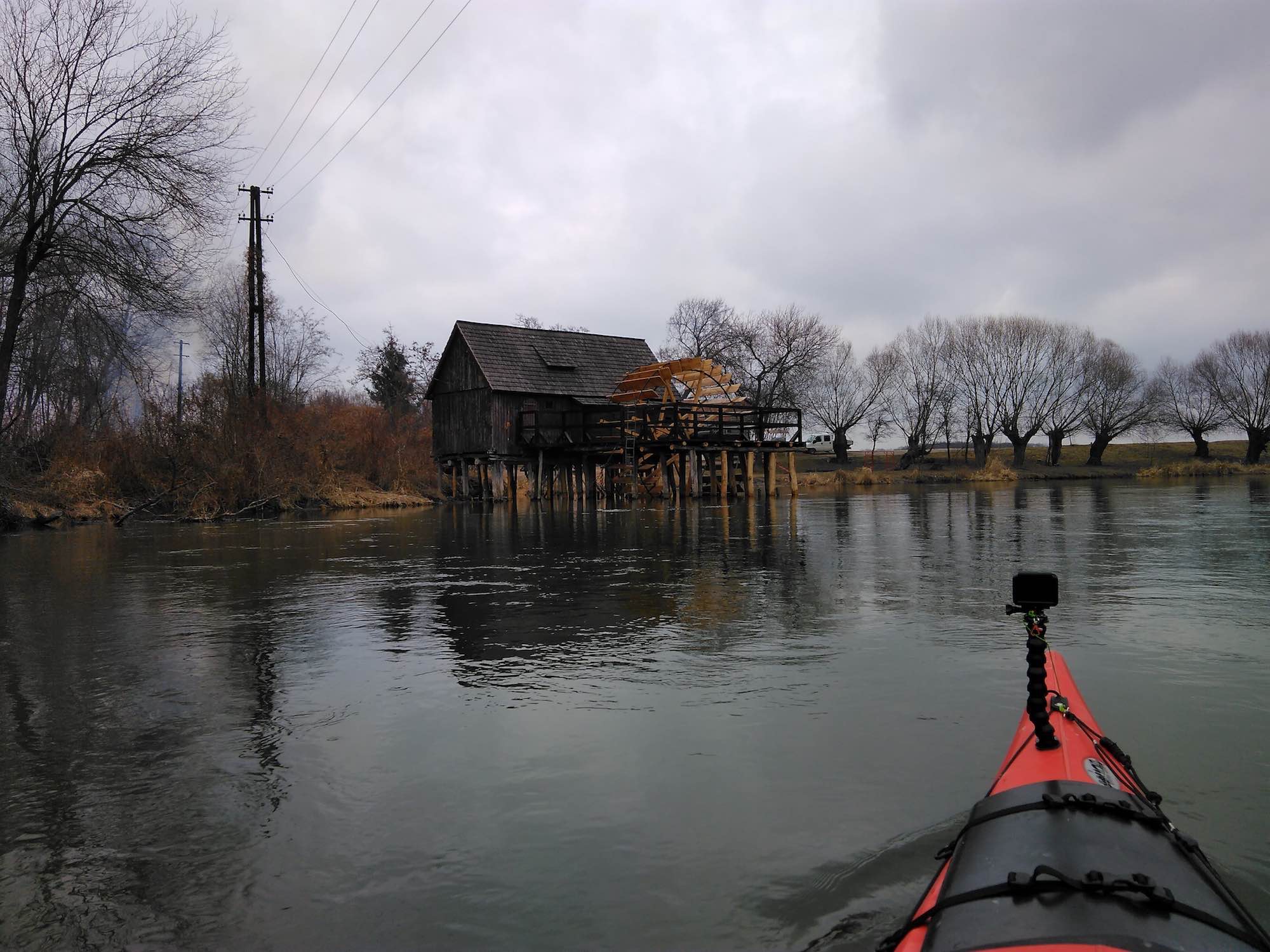 Watermill next to Tomášikovo
Watermill next to Tomášikovo
The confluence of the Little Danube and the Black Water looks like a lake thanks to the dam. We got off on the left side just a few meters from the dam. We explored a small water power plant before we transferred the boats.
 The confluence of Little Danube and Black water
The confluence of Little Danube and Black water
An unknown dam is located on the right side of the river. It was not distinguishable if it was a confluent or just a river beam. The water was very clean. I decided to explore it. I turned back after a few meters. There were fallen trees. I did not want to risk swimming in February. The map told me it was a few kilometer long dead river beam. It is not clear why there was such clean water. It does not look like water from the Little Danube. I might come back later and explore it.
 Unknown river beam
Unknown river beam
The watermill in Jahodná. It is the last one on the Little Danube. It is for sale.
 Watermill in Jahodná
Watermill in Jahodná
The owner of a nearby restaurant got little goats as a birthday gift a few years ago. They are doing pretty well here. He repeats this tradition every year. The goats live freely here. They eat local vegetation and hay in the winter, which is transported by boat.
 Goats on island
Goats on island
The place of landing after the first day was directly in front of the B&B, where we slept.
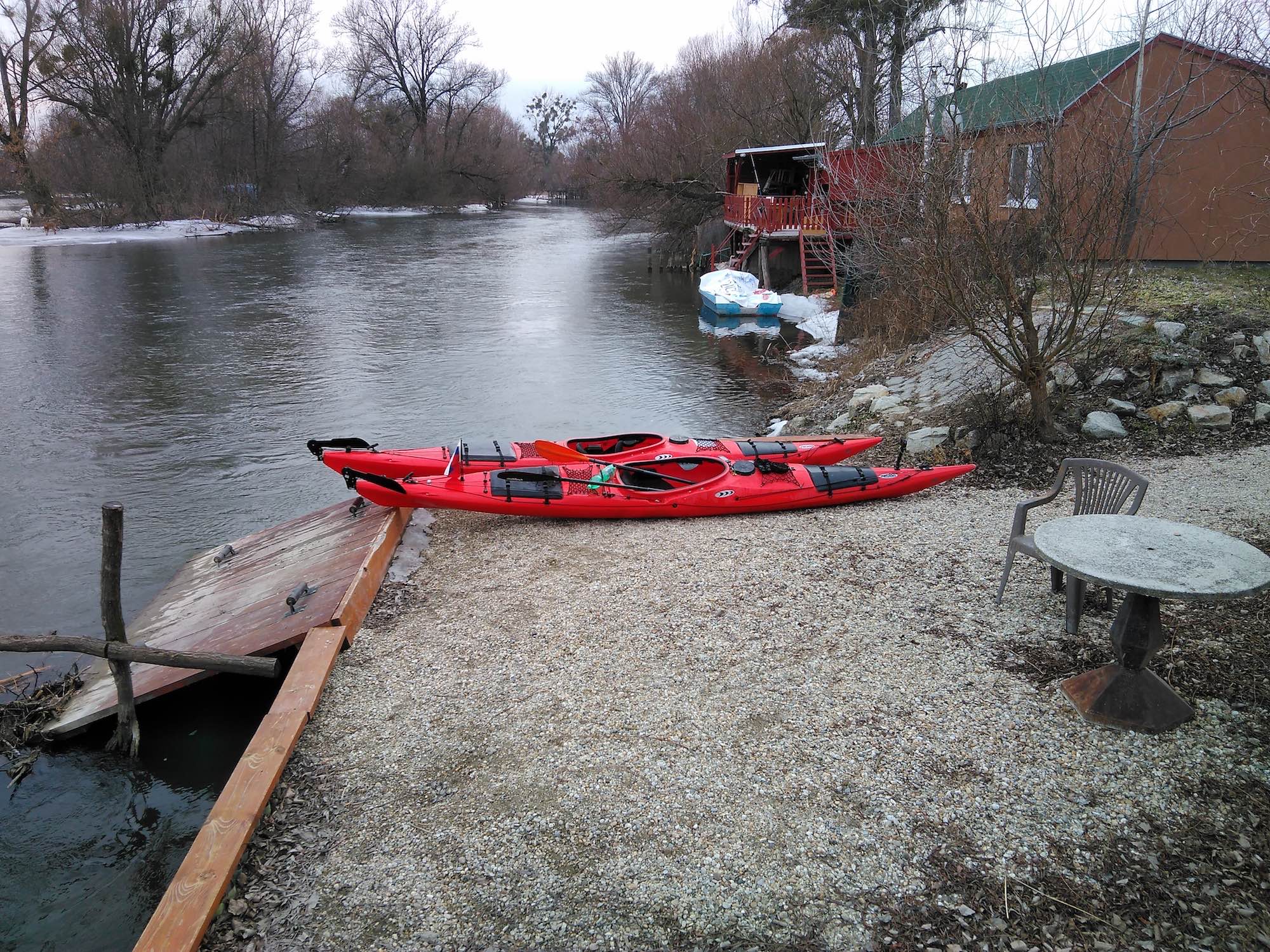 Anchorage Alba Regia
Anchorage Alba Regia
The B&B was empty except for the owner, a fat dog and a tomcat. We were the only guests. The dust flipped away from the towel. I was even dirtier than before I took a shower. Fortunately, I always bring my own towel. It looked as if there was nobody for at least a few months.
 The fat tomcat
The fat tomcat
The kitchen is not working in the winter, so I am finishing my last supplies. Fortunately, my kayak buddy brought delicious lokshes. (Traditional Slovak meal.) I ate the most of them. He was not a very good food guard.
We were back on the water at 8.30 am like yesterday. It was very cold. We saw only to a few meters because of heavy mist. It was the same during the whole day. The temperature was below zero later in the afternoon.
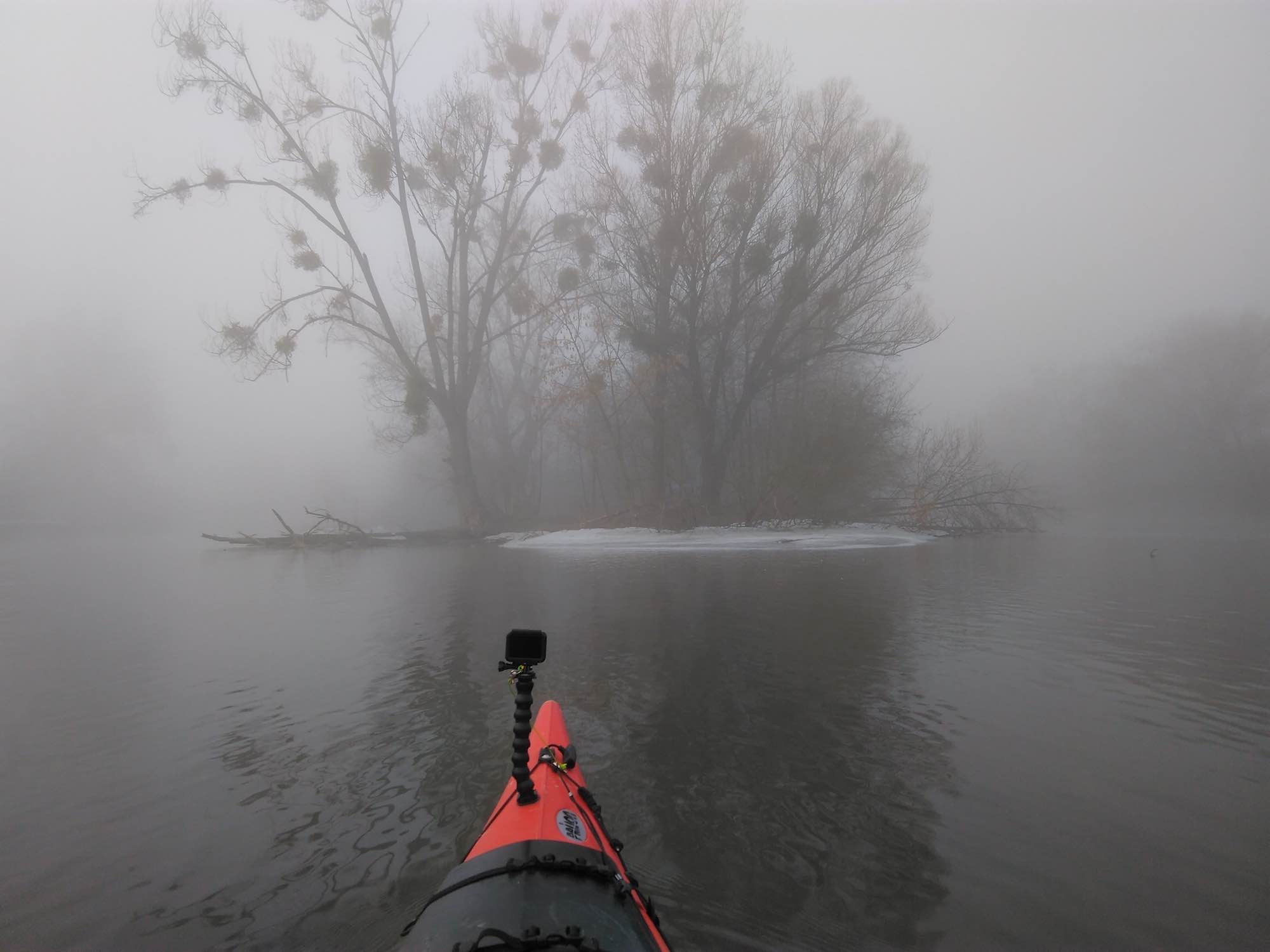 The mist
The mist
The cormorant gave us this pretty chub as a gift. He probably did not know that we had already had breakfast.
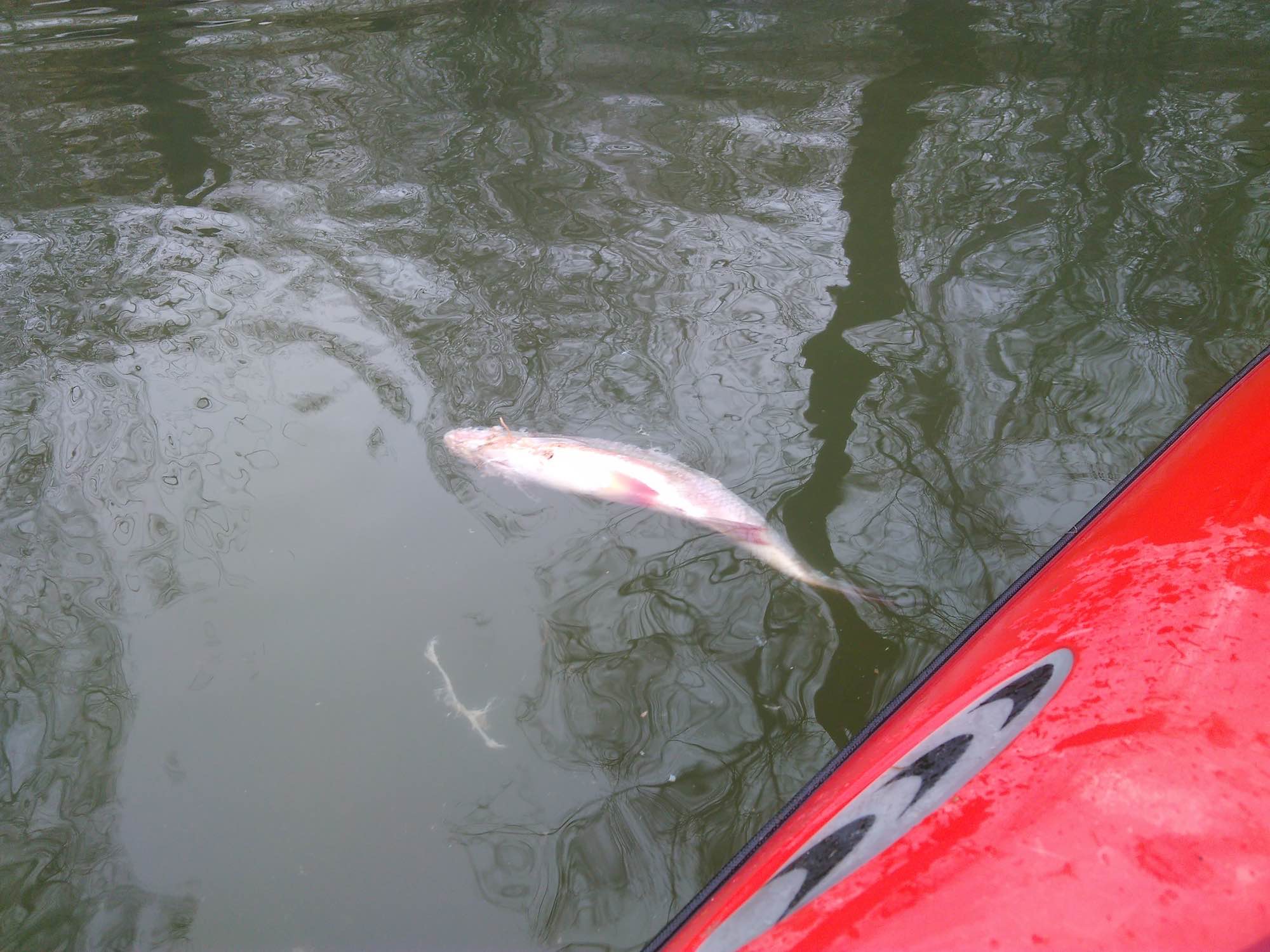 Gift from cormorant
Gift from cormorant
The forest alongside the river looked really scary. We consistently increased the pace to stay warm.
 Scary forrest
Scary forrest
This gull did not die thanks to bird flu. Its head was hit.
 Gunned gull
Gunned gull
Unfortunately, we met a lot of dead animals. This wretch probably drowned while he was trying to cross the river and got stuck in the mud.
 Drowned deer
Drowned deer
The settlement near the water was guarded by barking dogs. They were spying on us alongside the shore for a long time.
 Guards
Guards
We saw the lines of trees from time to time. Their trunks were partially red.
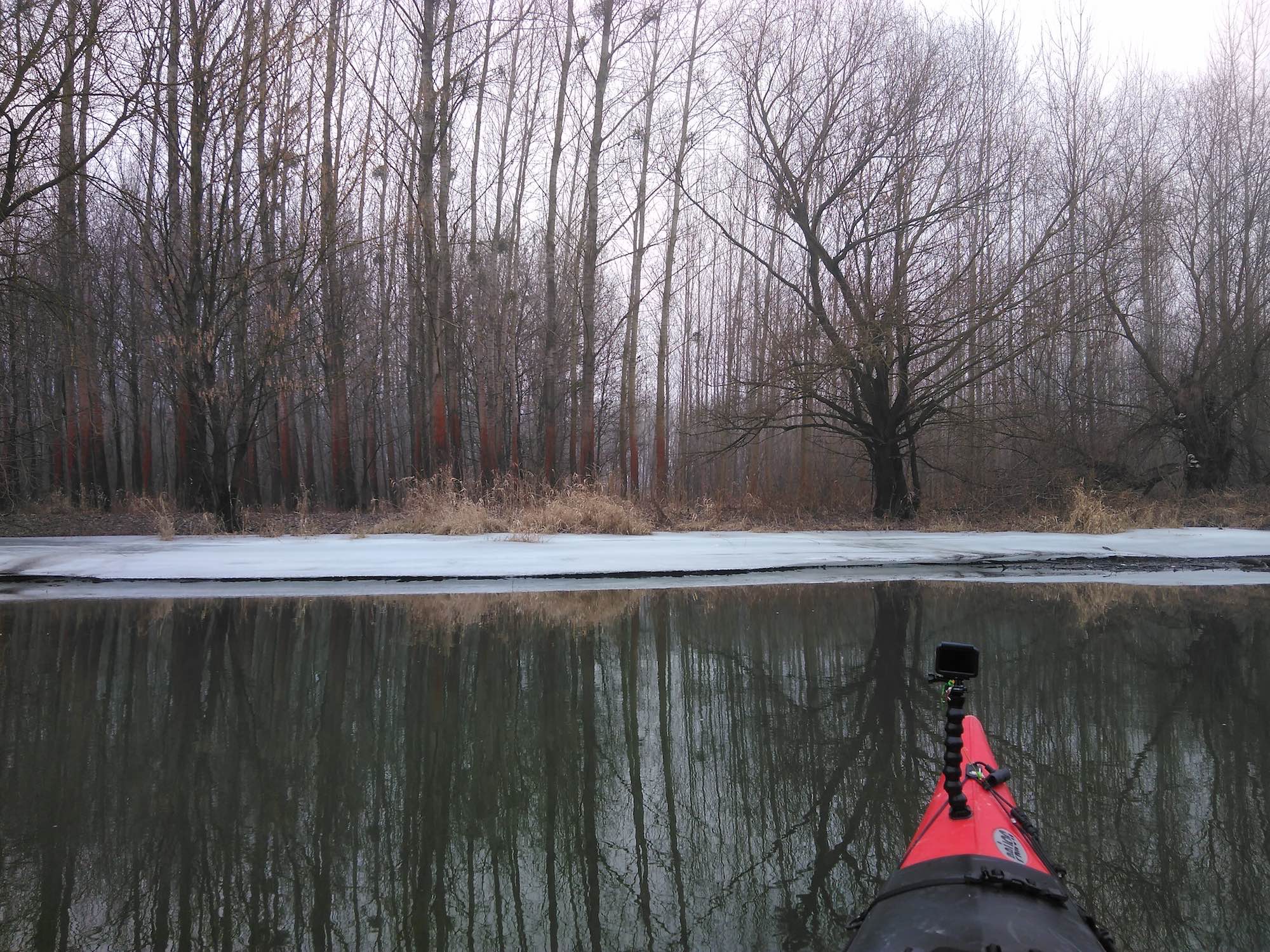 The red trees
The red trees
The Klátovské rameno was still frozen.
 The firth of Klátovské rameno
The firth of Klátovské rameno
I have been feeling pain in the shoulders. I was a bit cold. The Kolárovo bridge appeared after we curved. We were almost in the finish. Only a few kilometers remained.
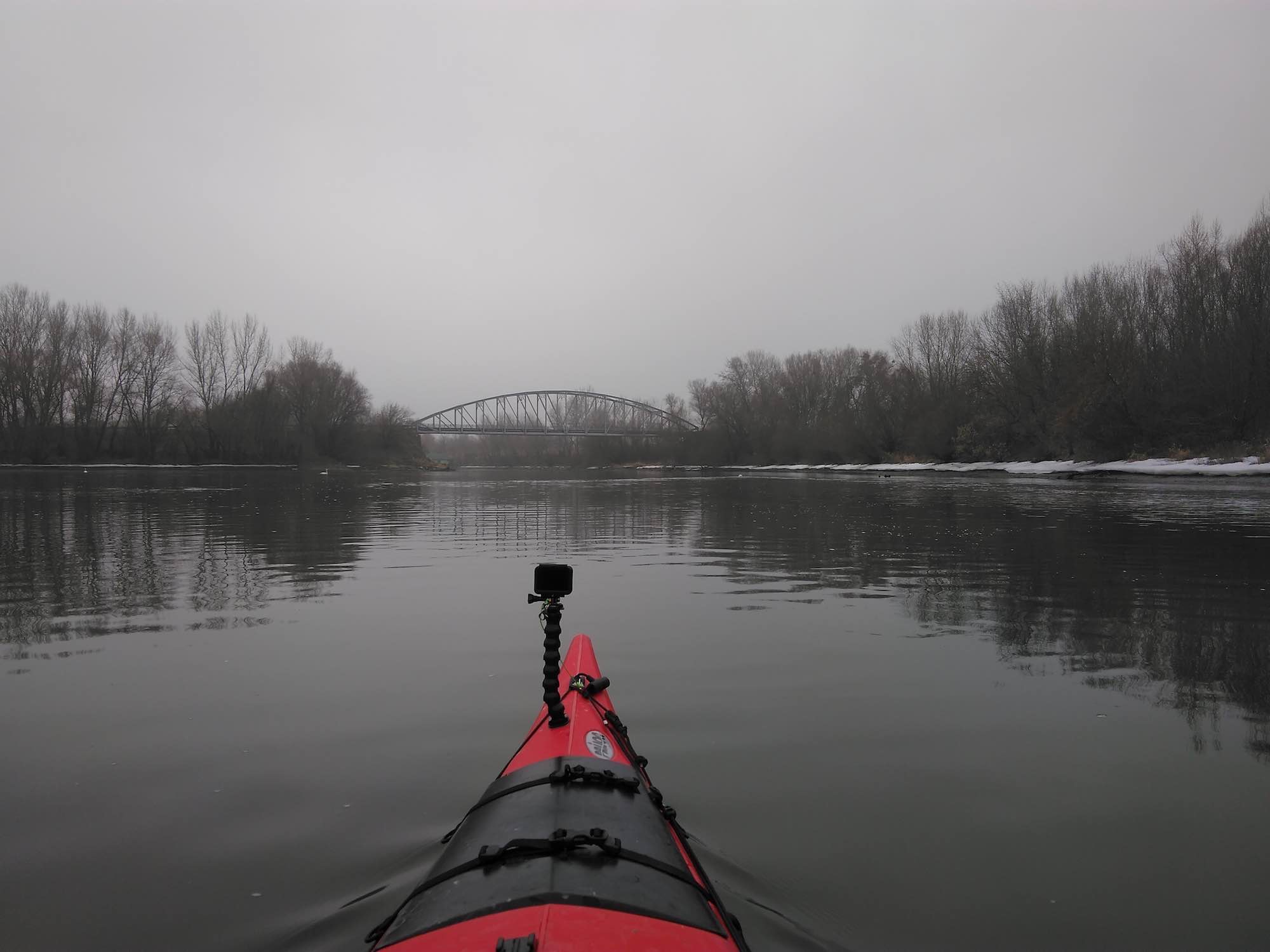 The bridge over the Little Danube in Kolárovo
The bridge over the Little Danube in Kolárovo
We approached the confluence of the Little Danube and the river Váh. The Váh is much wider and slower than its upper flows. It has the appearance of a lowland river here. Here is its official end. The name is Vážský Danube from this point on. It pours to the Danube 30 km away from here - in Kolárovo. There are sandy shores and the gravel bottom. This is a pleasant change in contrast to the muddy Little Danube.
 The confluence of the Little Danube and the Váh
The confluence of the Little Danube and the Váh
We finished our two day long journey in front of the bridge over the Váh. The new flume was dug out because of repeating floods. The original flume became the lake.
 The bridge over the Váh in Kolárovo
The bridge over the Váh in Kolárovo
Finally, a pleasant landing. The fishermen told us there was ice in the morning. The rest of the lagoon was still frozen.
 The End
The End
We waited for our transfer for almost 3 hours. The temperature was close the zero. We were very cold. I decided to walk around. The floated watermill and the longest covered wooden bridge in central Europe were close. The watermill stopped looping after they built the dam, of course. The museum was inside the watermill. There is a pub on the island.
 Watermill in Kolárovo
Watermill in Kolárovo
The view of a dead flume from the wooden bridge. Recently, a down stream of the Little Danube and also the Váh have been frozen too. You could walk on the river and get to the other side.
 Dead flume
Dead flume
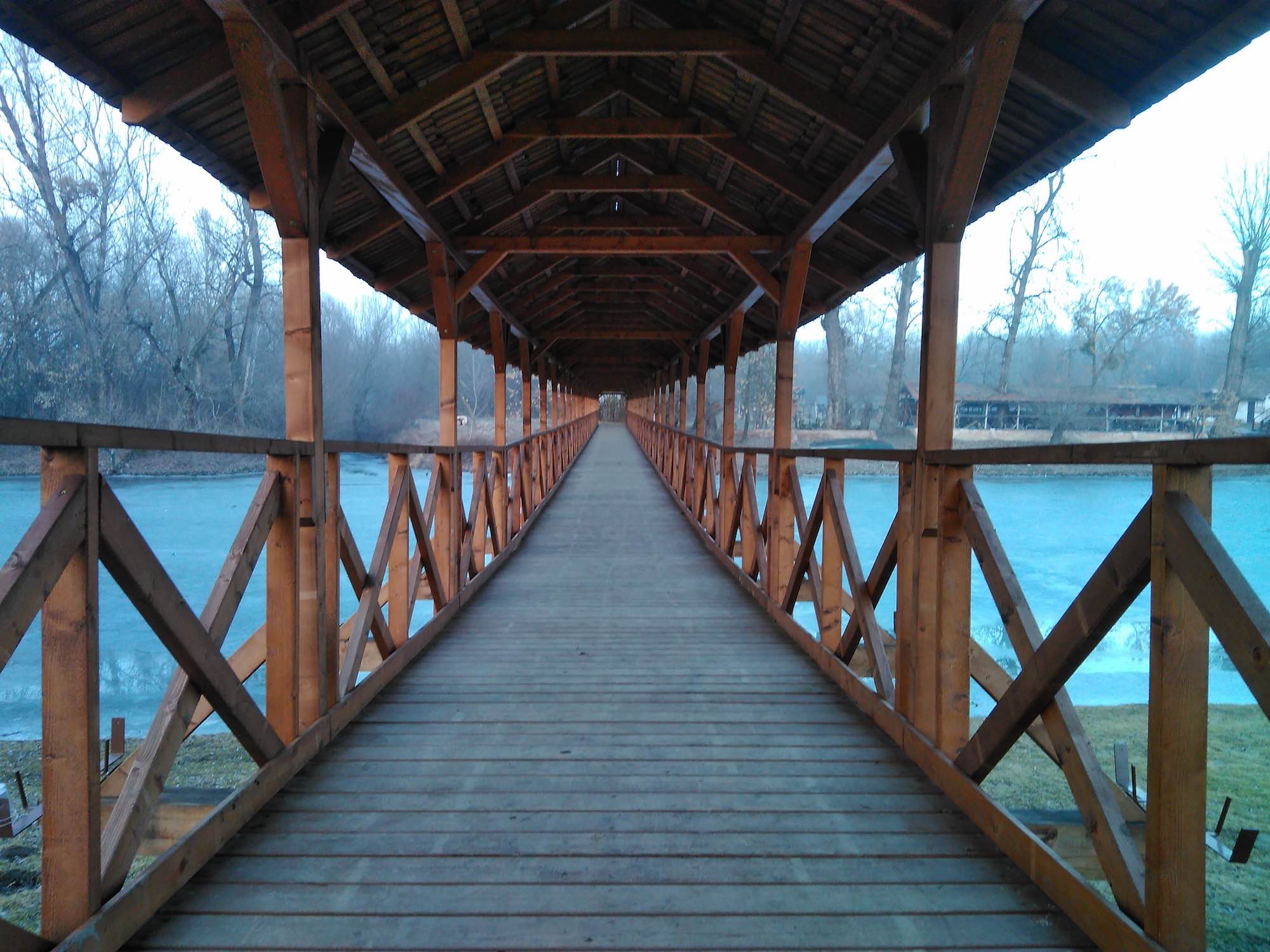 Wood bridge
Wood bridge
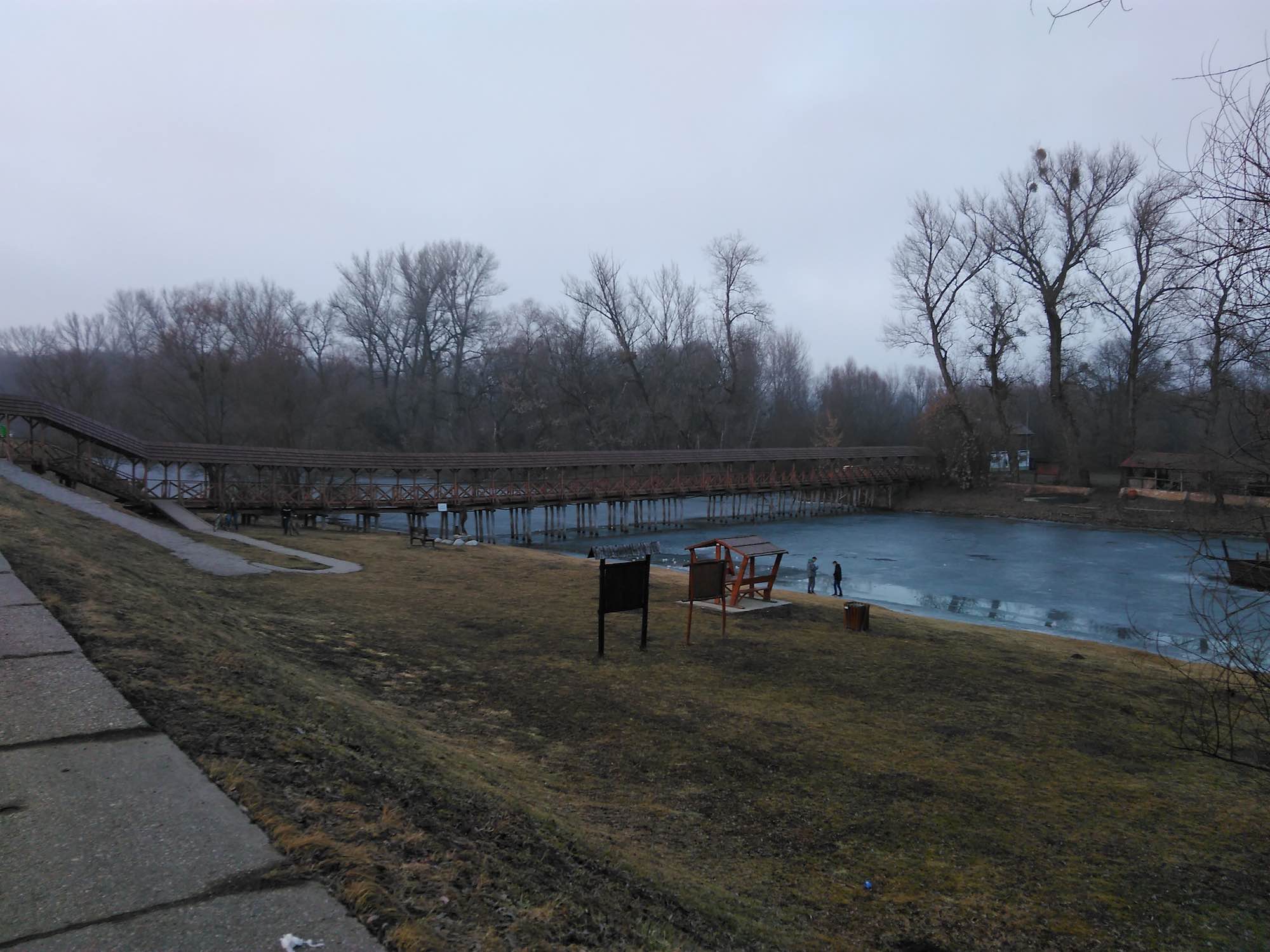 Wood bridge
Wood bridge
The sun is almost behind the horizon. We were still waiting for our transfer.
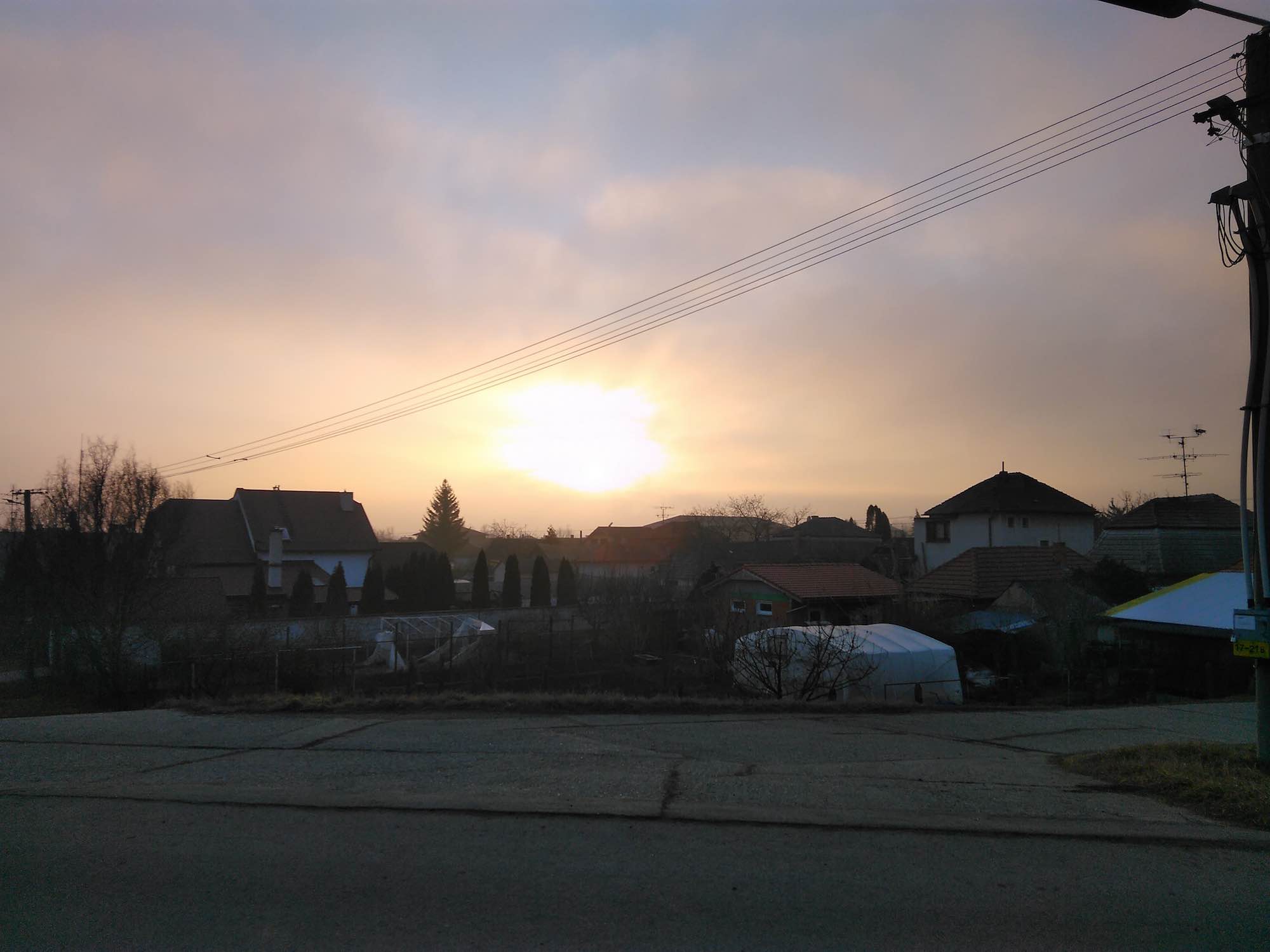 Sunset above Kolárovo
Sunset above Kolárovo
The mist showed up again in the evening. The visibility was very low, only to a few meters. We were driving home 30 km/h for more than 100 kilometers. We came at night. The challenging expedition was worth the effort, though. I am looking forward to the spring. At the same time I hope I will see something interesting until the winter leaves.
